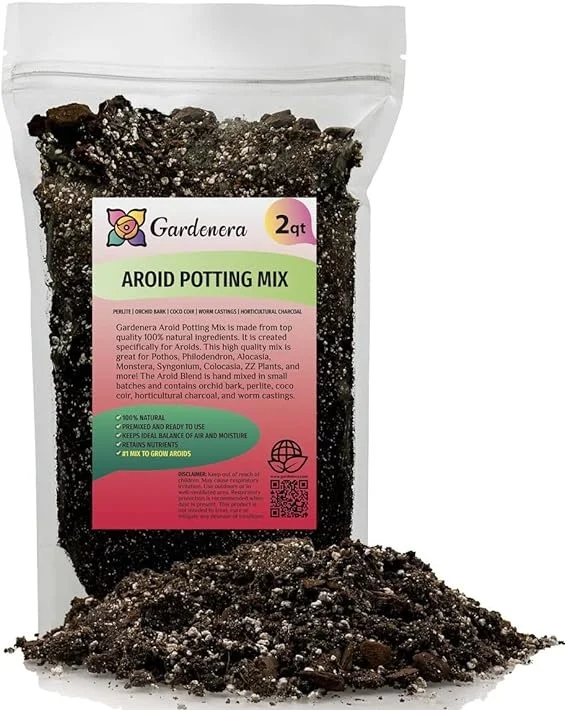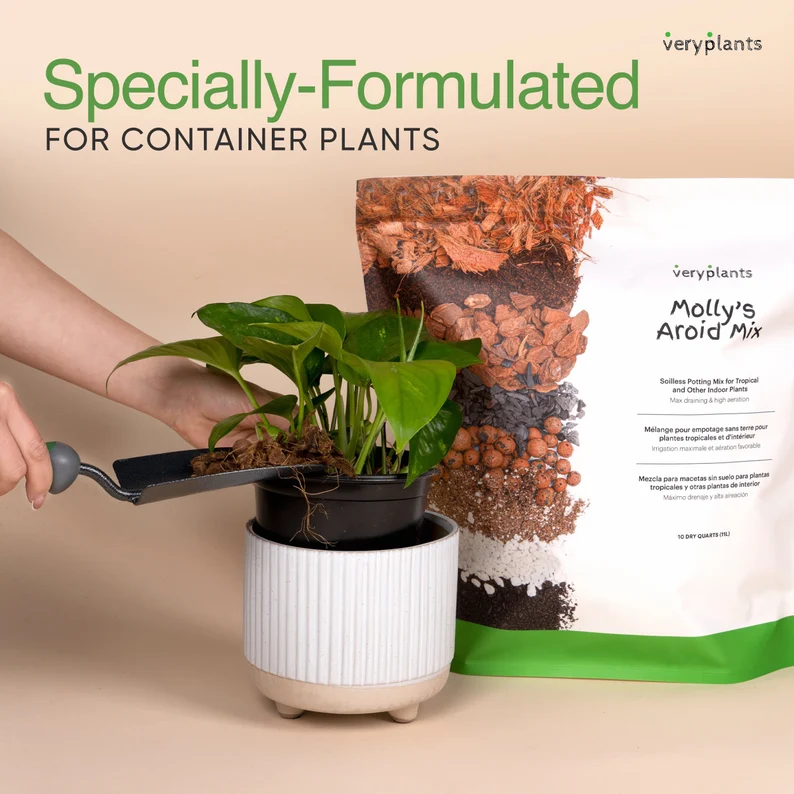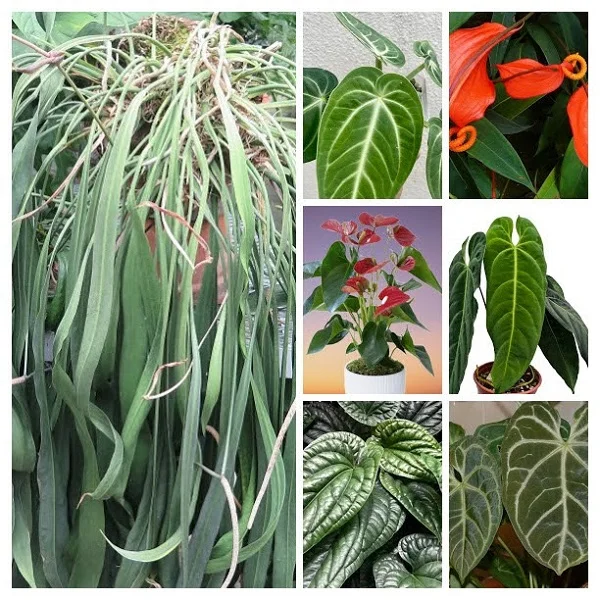Anthurium veitchii (King Anthurium) Indoor Care, Propagation, Common Problems with Remedies
Some links in this post may be affiliate links
Anthurium veitchii (King Anthurium) grows best in bright indirect light away from direct sunlight, moderately warm and humid conditions and consistently moist, rich, aroids potting soils coupled with fortnightly feeding in the growing season.
Anthurium veitchii is one of the rare Anthurium varieties with large, pendulous leaves which are a sight to behold in any space.
King Anthurium is a slow-growing plant whose long leaves have a corrugated appearance. A new leaf may take upto 3 months to develop.
King's species name, 'veitchii' is in honor of John Veitch, the founder of a longstanding group of plant nurseries based in Exeter, United Kingdom.
Anthurium veitchii comes in two forms; the narrow-leaved form and the wide-leaved form. They are very similar save for a few differences. The narrow form has narrower and more pointed leaves than the wide form.
The ribs are fewer and spaced a little further apart in the wide form than the narrow form. The wide form is more tolerant of indoor humidity than the narrow form.

Botanical name: Anthurium veitchii
Family: Araceae
Common name: King Anthurium
Origin
Anthurium veitchii is native to the tropical rain forests in Colombia, South America where it grows as an epiphyte on trees.
Size
King Anthurium can grow to a height of 3-6 feet and 3-4 feet wide. The leaves may be up to 6 feet long which places this plant among the large-leafed plants ideal for a bold statement in any space.
Toxicity
King Anthurium like other Anthuriums is toxic to both humans and pets. Anthuriums have been found to contain oxalate crystals which can cause digestive distress, breathing problems and skin irritation. Keep the plant away from children and pets. Always wear gloves when handling this plant and wash your hands thereafter.
Where to Buy
Are you looking to add Anthurium veitchii to your collection? Magnificent plants are available online on Etsy (Link to Etsy).
Anthurium veitchii Care Indoors
Anthurium veitchii (King Anthurium) prefers bright indirect light, average warmth of 18-280C, humidity of 60-70% and consistently moist, rich, aroids potting soils coupled with fortnightly feeding during the growing season.
King Anthurium requires removal of yellow leaves to keep it neat as well as reduce pest and disease infestations. Repotting is only needed when it becomes pot-bound. Keep reading for a detailed account on these growing conditions and how to achieve them.
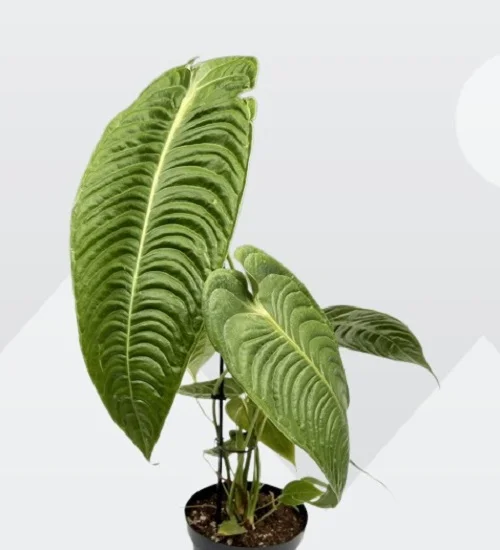
Light Requirements
Anthurium veitchii grows best in bright indirect light (dappled light). Keep it away from direct sunshine as it can scorch the leaves.
Where the natural lighting is not adequate, consider investing in a grow light to supplement it to promote lush growth.
Rotate the pot regularly to ensure that the plant receives light on all sides for even growth to avoid lop-sided growth.
Temperature and Humidity
King Anthurium requires an average warmth of 18-280C to thrive. Keep it away from cold drafts to prevent sudden changes in temperature. Check out this guide on understanding temperature for houseplants.
Anthurium veitchii needs a humidity of 60-70% to blossoms. Increase humidity by setting the pot on a wet pebble tray or use a humidifier.
Brush the leaves with a soft brush to get rid of dust. Avoid wetting the leaves as it can result in fungal diseases infestations.
Watering
Water King Anthurium liberally during the growing season when the top 1-2 inches of soil feels dry to the touch and keep soil consistently moist.
Decrease watering in the cold season as growth is reduced and maintain the soil slightly moist but do not let the soil dry out completely.
Use tepid, chlorine-free water as the plant is sensitive to chlorine and other chemicals dissolved in water. Avoid wetting the foliage as it can lead to fungal diseases.
Make sure that the pot has a drainage hole and empty the saucer to prevent the soil from getting soggy as it can cause root-rot and eventual loss of the plant.
Potting Mix
The best potting mix for King Anthurium should be rich in organic matter and well-drained to prevent it from getting soggy while providing the required nutrients. Potting mixes designed for aroids are ideal for this plant.
Fertilizer
Feed Anthurium veitchii every 4-6 weeks during the growing period with a balanced, liquid fertilizer. Stop feeding in the cold season as growth is minimal and feeding at this time can lead to fertilizer burn.
Regularly, flush out accumulated salts from the soil by running a stream of water through the soil until the water comes out through the drainage hole. Allow it to run for a few minutes and repeat the process several times.
Repotting
Repot Anthurium veitchii every 1-2 years at the beginning of the growing season. Use a pot one size larger and free-draining soil that is rich in organic matter.
Ascertain that the pot has drainage holes to avoid getting soggy soil as it can lead to root-rot. Check out these self watering pots on Amazon.
Pruning
Pruning Anthurium veitchii is easy as it involves removal yellow and dead leaves to maintain the plant neat as well as reduce pest and disease infestations.
Cut the yellow leaves at the base of the stem with a sharp sterlized knife or a pair of scissors to avoid unnecessary injuries which can lead to disease infestations. Cut away any wayward leaves to maintain the shape of the plant.
Propagation
Anthurium veitchii (King Anthurium) can be propagated during the growing season from splits by plant division. Below is an outline on propagation by plant division.
How to propagate King Anthurium by plant division
Water the King Anthurium thoroughly at least 1 day before to make it easier to divide and also hasten establishment. A well hydrated plant suffers less shock and takes a shorter time to take root.
Carefully, slip the plant out of its pot and carefully divide it into sections by pulling apart the roots. Ensure each split has adequate roots to hasten establishment.
Select a 6 or 8 inches pot and ensure that the pot has a drainage hole to prevent the soil from getting soggy as it can lead to rotting.
Fill the pot with loose, free-draining, potting mix and make a hole in the center of the pot. Ensure that the hole is slightly wider than the root base of the split.
Place the split in the previously made hole and lightly firm the soil around the base while taking care not to bury it too deep; maintain the split at the same soil level it was in the previous pot.
Water the soil thoroughly and place the set up in a well-lit, warm place until the new Anthurium veitchii is well established after which you can begin routine care.
Related: How to Propagate Anthurium Plants by 5 Easy Methods
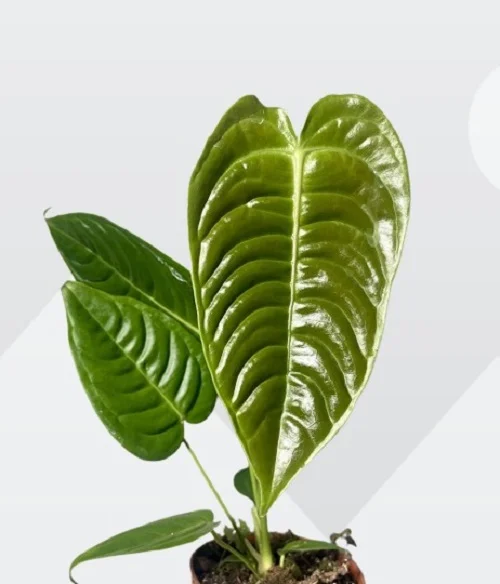
Anthurium veitchii Growing Problems
Anthurium veitchii (King Anthurium) problems include brown leaf tips, yellow leaves, brown leaf spots, drooping leaves, pests and diseases among others. Read on for more on these problems, their remedies and solutions.
Pests
The common pests in Anthurium veitchii are spider mites, scales, mealybugs, aphids and fungus gnats. Isolate the affected plant to prevent spread to other plants and treat it with neem oil to get rid of the pests as per the manufacturer's instructions.
Diseases
King Anthurium is prone to root-rot disease which is more prevalent in soggy soil. To keep root-rot away, maintain the soil moist but not soggy by ensuring that the pot has a drainage hole and that the soil is well-drained. Read more on how to treat root-rot in houseplants.
Brown leaf tips
Two possible reasons are responsible for brown leaf tips in Anthurium veitchii. One main reason for brown leaf tips is too low humidity. Set the pot on a wet pebble tray or use a cool mist humidifier to raise humidity.
The second possible reason for brown leaf tips in King Anthurium is soggy soil. Keep the soil moist but not soggy by ensuring that the pot has a drainage hole and the soil is well-drained that it drains easily.
Yellow leaves
There are many possible causes of yellow leaves in Anthurium veitchii. One cause of yellow leaves is soggy soil. Maintain the soil moist but not soggy. Ensure that the pot has a drainage hole and the soil is free-draining to prevent the soil from getting soggy.
The second cause of yellow leaves in King Anthurium is cold drafts. Protect the plant from cold drafts or place it away from windy doors and windows.
Brown leaf spots
The brown leaf spots are sun scorch marks caused by exposure of the King Anthurium to direct sunlight. Move the plant to a shaded place or use a curtain to filter the sunlight.
Drooping leaves
There are four possible causes of drooping leaves in Anthurium veitchii. One possible cause of drooping leaves is low humidity. To increase humidity, set the pot on a wet pebble tray or use a cool mist humidifier.
The second possible cause of drooping leaves in King Anthurium is incorrect watering; either underwatering or overwatering. Maintain the soil moist at all times during the growing season and never allow the soil ball to dry out completely or to be soggy.
The third possible cause of drooping leaves in Anthurium veitchii is too high temperature due to exposure to direct sunlight. Keep the plant away from direct sunlight by filtering the light with a sheer curtain.
The fourth possible cause of drooping leaves in King Anthurium is pests and diseases infestation. Regularly inspect your plant and take timely control measures for these pests.
You liked it? Share on social media.
Related Content
Amazon Associates Disclosure
Homeplantsguide.com is a participant in the Amazon Services LLC Associates Program, an affiliate advertising program designed to provide a means for sites to earn advertising fees by advertising and linking to amazon.com.
